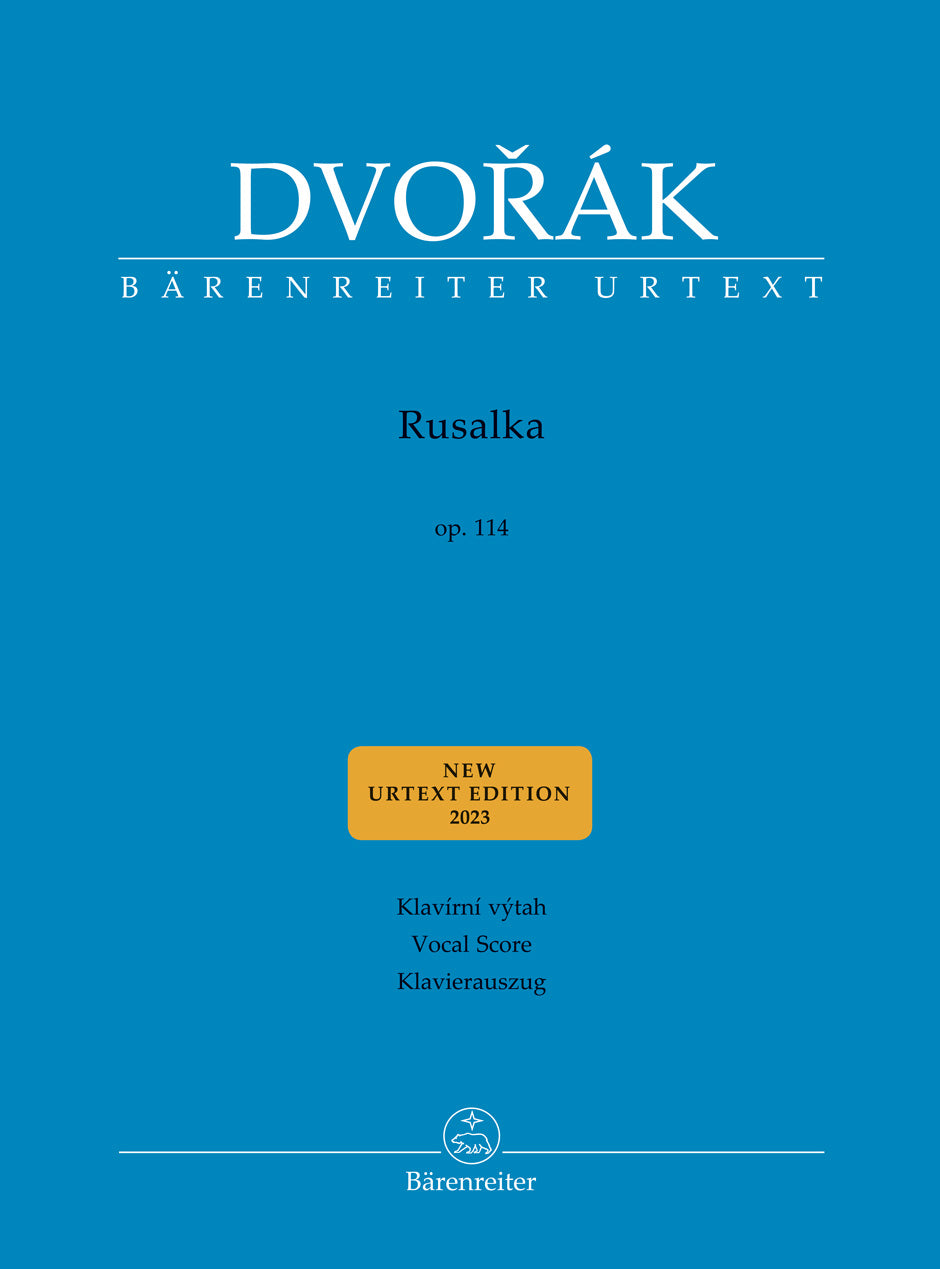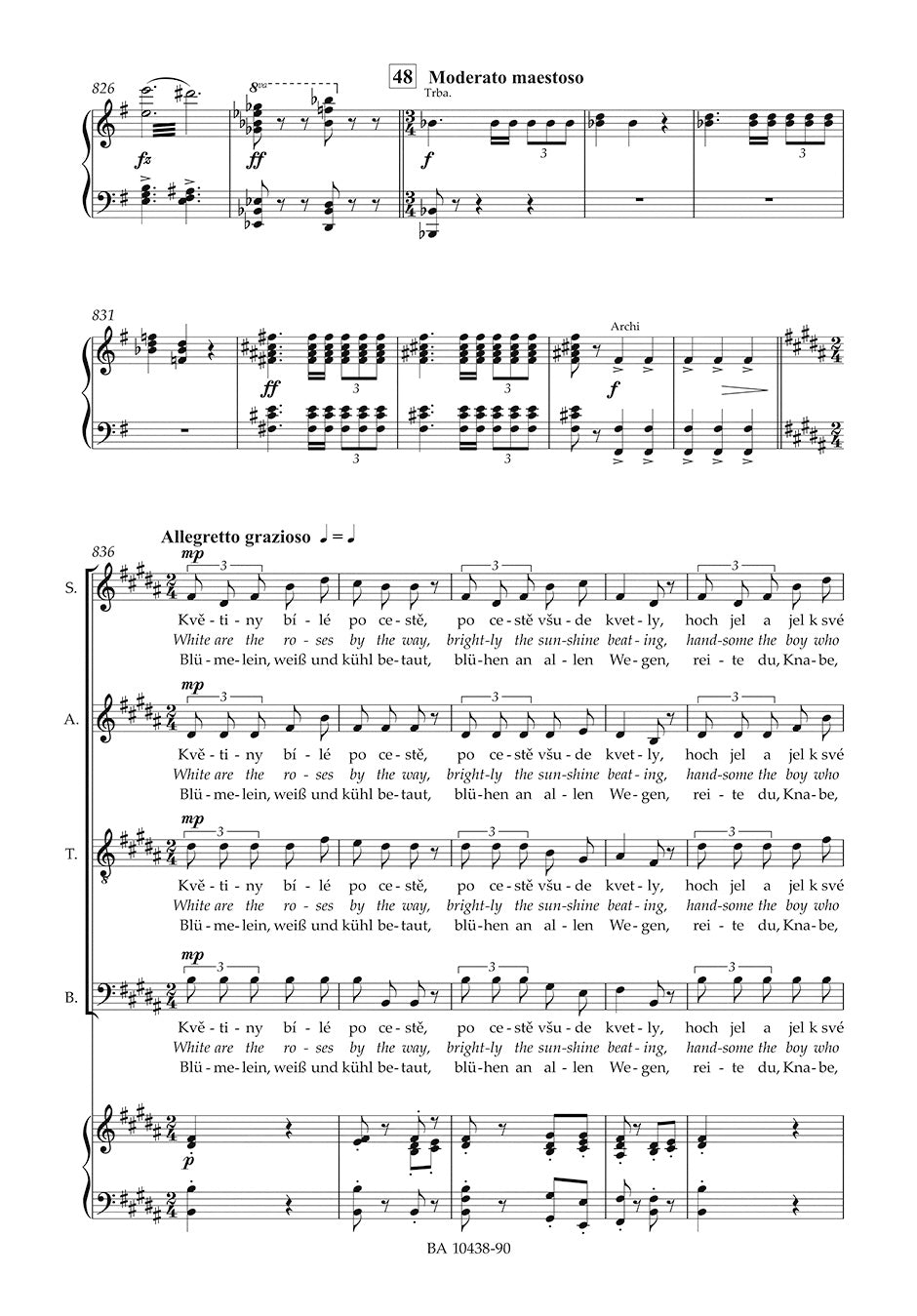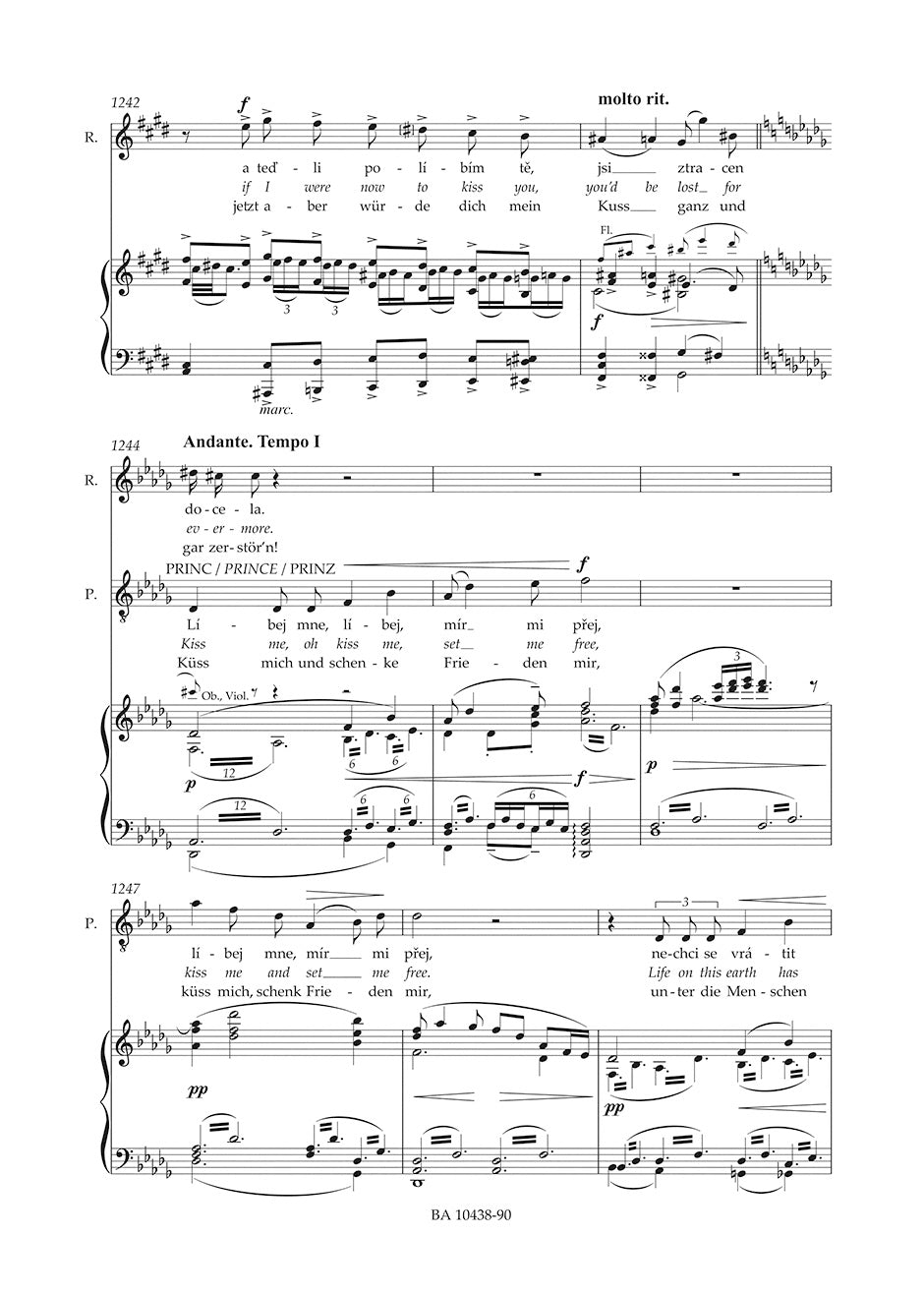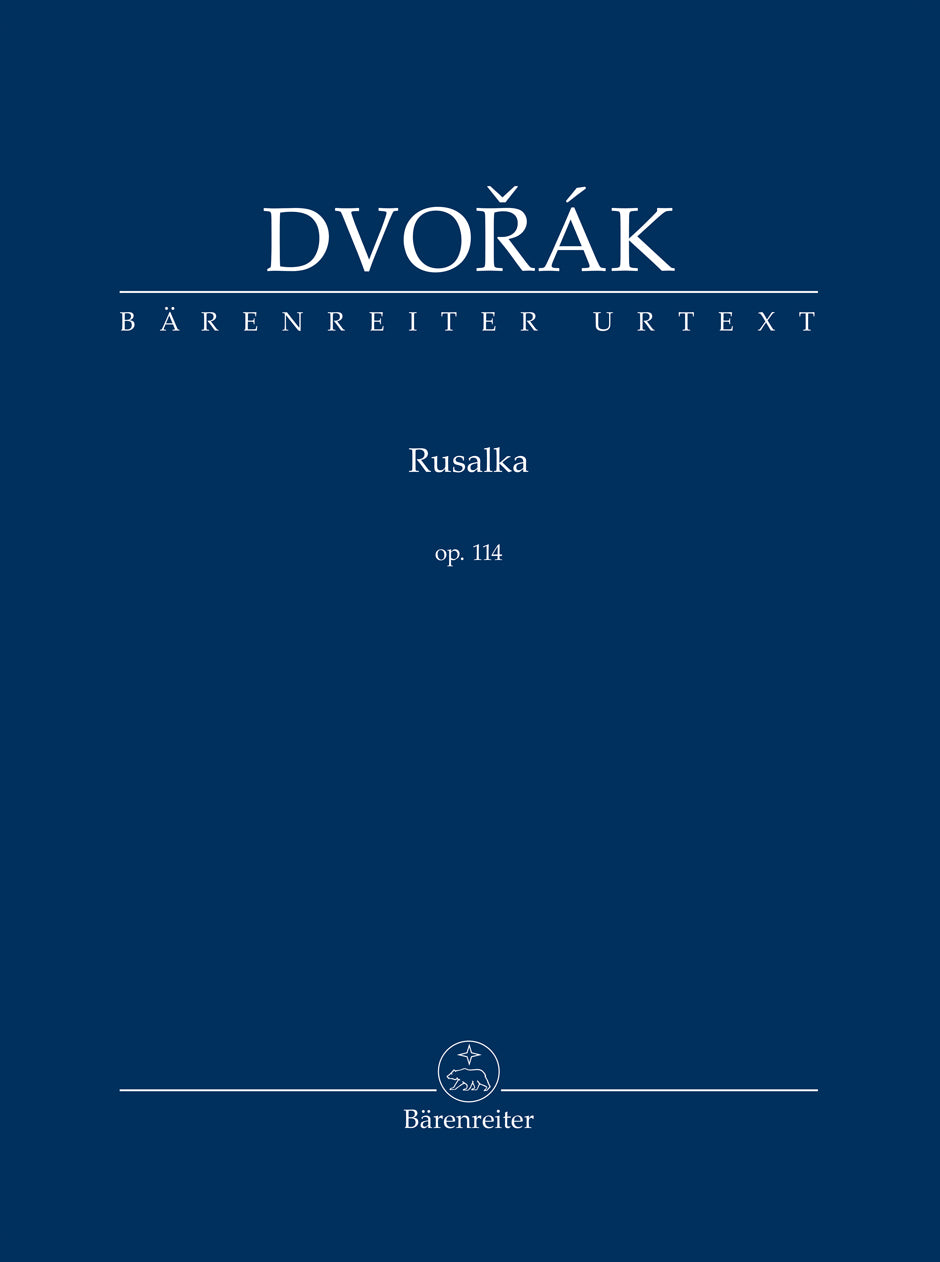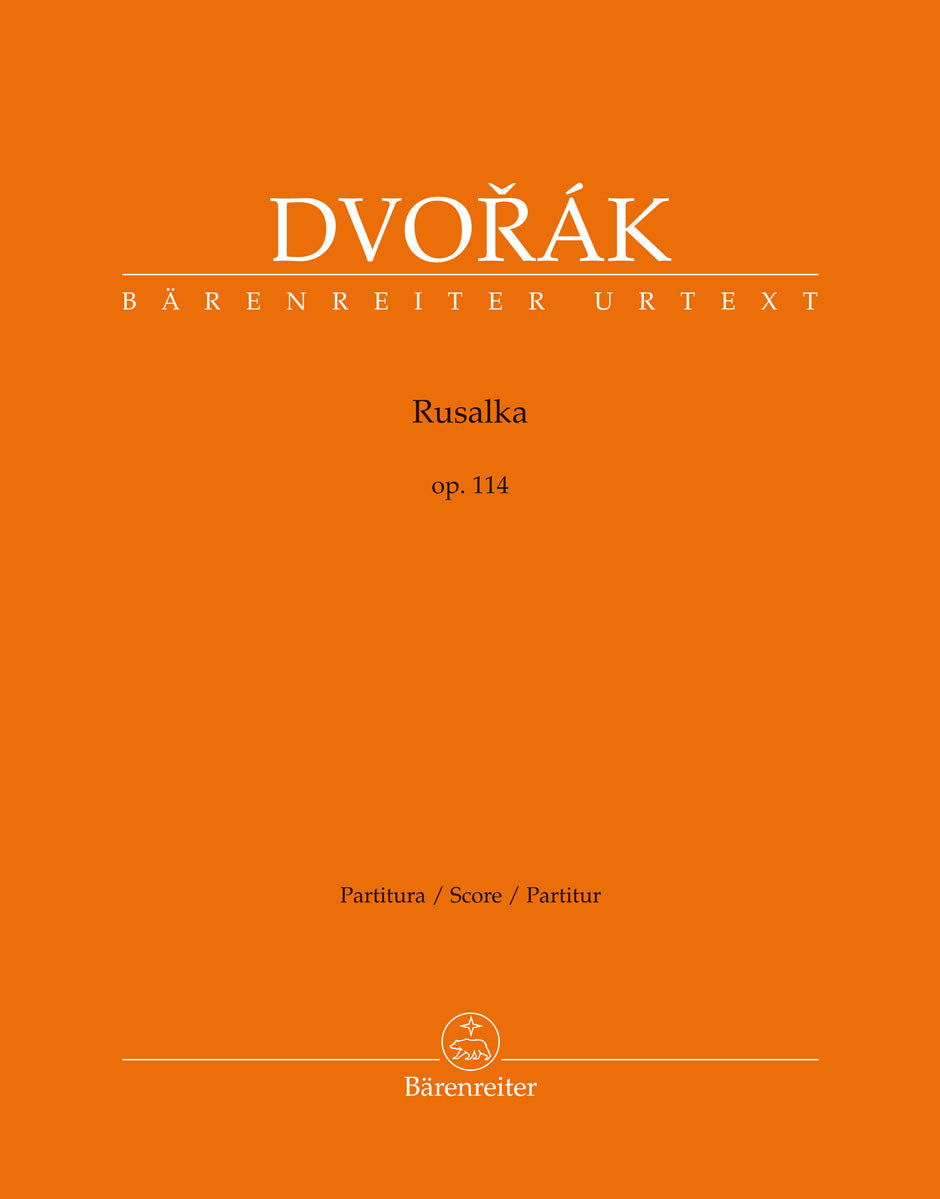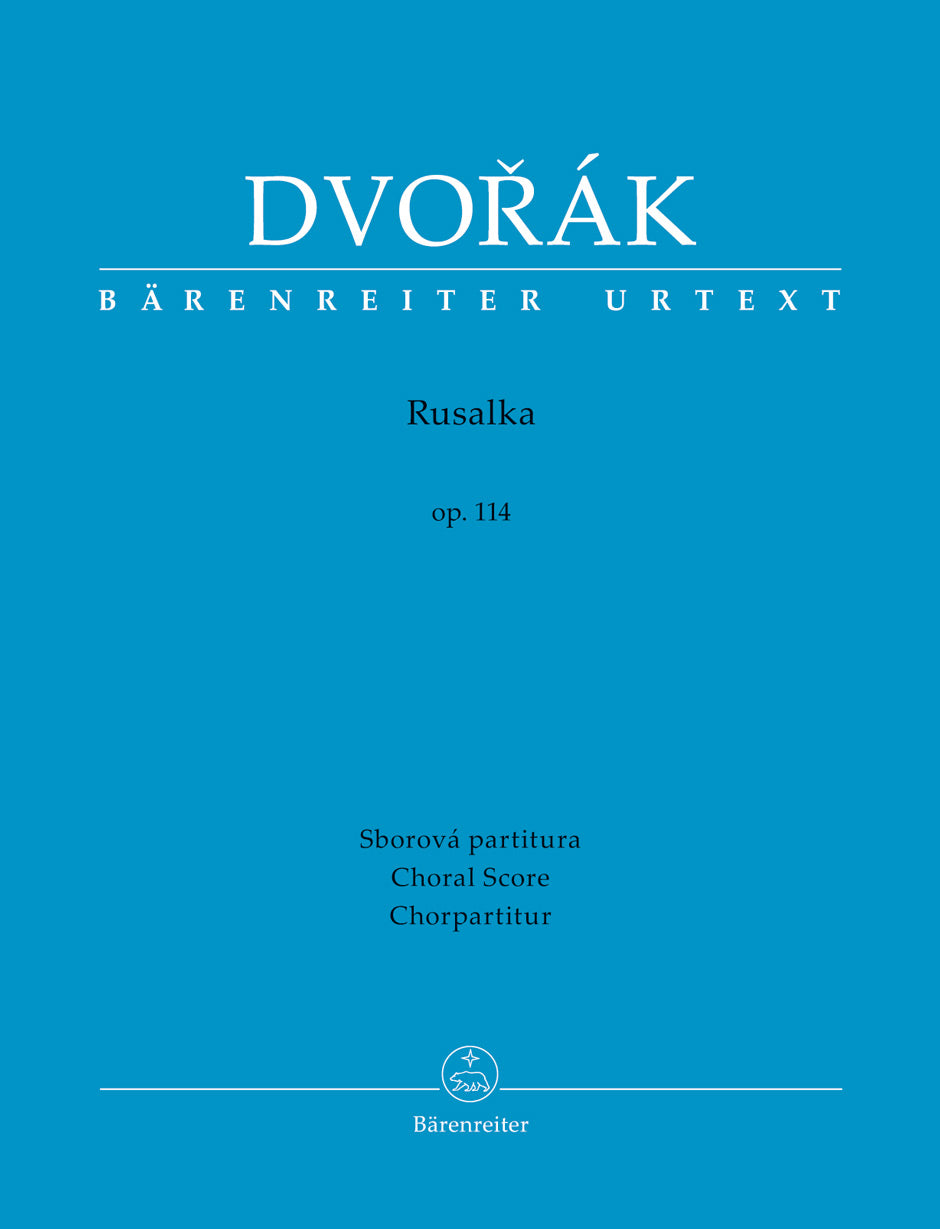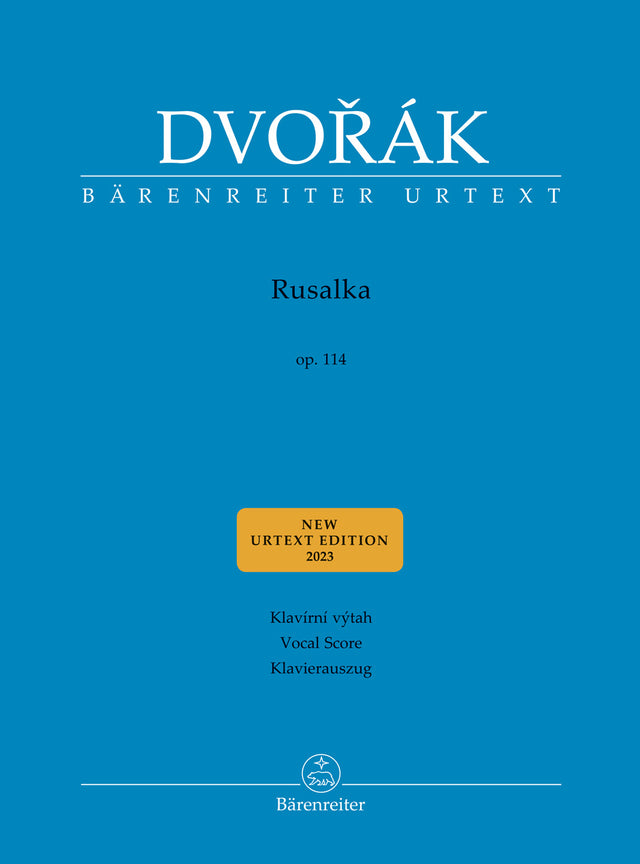Dvořák: Rusalka, Op. 114
In stock and typically ships within 1 business day.
- Composer: Antonín Dvořák (1841-1904)
- Instrumentation: Opera
- Work: Rusalka, B. 203, Op. 114
- ISMN:
- Size: 7.5 x 10.6 inches
- Pages: 336
Description
Antonín Dvořák composed his penultimate and most well-known opera "Rusalka" in just seven months between April and November 1900. The premiere took place on 31 March 1901 at the National Theatre in Prague under Karel Kovarovic. Today, "Rusalka" is one of the most frequently performed works of the international opera scene.
More than sixty years after the Jarmil Burghauser edition, a new critical edition is presented here that brings the musical text of the opera up to today's standards. Editors Robert Simon and Jonáš Hájek worked not only with the autograph and the copy of the score from which the premiere and many subsequent performances were conducted, but also with three handwritten piano reductions directly connected to Dvořák, but unknown to Burghauser, as well as with sketches and other sources. What is new compared to the previous edition is the consistent marking of editorial additions, the restoring of some of Dvořák's original readings in the vocal text, and a detailed evaluation of the vi-de markings authorised by the composer. At the same time variability is retained and conductors continue to have the option to make cuts.
The vocal score was issued by the publisher Mojmír Urbánek only after Dvořák's death in 1905. This is why Burghauser did not consider it relevant. in fact, however, the composer had taken part in the preparation of the piano reduction and had given it his very own sound character by taking the liberty of deviating here and there from the full score. This excellent, well-manageable piano part was largely adopted in the new piano reduction by Petr Koronthály. Also included are notes by the American soprano Bree Nichols on the pronunciation of the Czech vocal text.
Publishers use a lot of words to describe what they sell, and we know it can be confusing. We've tried to be as clear as possible to make sure you get exactly what you are looking for. Below are descriptions of the terms that we use to describe the various formats that music often comes in.
Choral Score
A score for vocalists that only contains the vocal lines. The instrumental parts are not there for reference. Generally, cheaper than a vocal score and requires multiple copies for purchase.
Facsimile
Reproductions of the original hand-written scores from the composer.
Full Score
For ensemble music, this indicates that the edition contains all parts on a single system (there are not separate parts for each player). In larger ensembles, this is for the conductor.
Hardcover
Hardbound. Generally either linen-covered or half-leather.
Orchestral Parts
Similar to a wind set, this is a collection of parts. In the case of strings, the numbers listed are the number of copies included, though generally these are available individually (often with minimum quantities required).
Paperback
When publishers offer multiple bindings (e.g. hardcover) or study scores, this is the "standard" version. If you're planning to play the music, this is probably what you want.
Performance / Playing Score
A score of the music containing all parts on one system, intended for players to share. There are not separate parts for each player.
Set of Parts
For ensemble music, this indicates that there are separate individual parts for each player.
Solo Part with Piano Reduction
For solo pieces with orchestra, this is a version that contains a piano reduction of the orchestra parts. For piano pieces, two copies are typically needed for performance.
Study Score
A small (think choral size) copy of the complete score meant for studying, and not playing. They make great add-ons when learning concertos and small chamber works.
Vocal Score
A score prepared for vocalists that includes the piano/organ part or a reduction of the instrumental parts.
Wind Set
For orchestral music, this is a collection of wind and percussion parts. The specific quantities of each instrument are notated.
With Audio
In addition to the printed music, the edition contains recordings of the pieces. This may be an included CD, or access to files on the internet.
With / Without Fingering (Markings)
Some publishers prepare two copies - a pure Urtext edition that includes no fingering (or bowing) suggestions and a lightly edited version that includes a minimal number of editorial markings.

